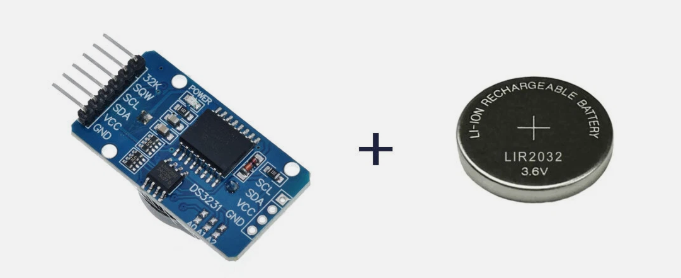
|

|
Forum Index : Microcontroller and PC projects : LIR 2032 (rechargeable)
| Author | Message | ||||
| PhenixRising Guru Joined: 07/11/2023 Location: United KingdomPosts: 1623 |
Do they actually work when used in a DS3231 RTC?  Found here |
||||
| robert.rozee Guru Joined: 31/12/2012 Location: New ZealandPosts: 2459 |
if they are a true Li-Ion cell, i would expect them to have a very short service life due to there being no over-voltage protection; if charged to over (approx) 4.2 volts a Li-Ion cell will be damaged. there are rechargeable lithium cells, such as a ML2032, but these require (i believe) an extremely low charging current. they may work in in the above modules. the question is: how long will a regular CR2032 last in the above module? and based upon this time (some number of years i would assume) is it worth spending money on c rechargeable cell and associated charging circuitry? cheers, rob :-) |
||||
| Volhout Guru Joined: 05/03/2018 Location: NetherlandsPosts: 5418 |
We have been here before... lithium cell in rtc Volhout PicomiteVGA PETSCII ROBOTS |
||||
| robert.rozee Guru Joined: 31/12/2012 Location: New ZealandPosts: 2459 |
good point Volhout! i forgot to mention that unless the diode and/or resistor is removed even a CR2032 primary cell will soon be wrecked! cheers, rob :-) Edited 2025-05-22 17:30 by robert.rozee |
||||
| phil99 Guru Joined: 11/02/2018 Location: AustraliaPosts: 2804 |
When powered from 3.3V a CR2032 is fine due to the diode voltage drop but a rechargeable lithium cell probably won't get enough charge. If powered from 5V adding a 3.9V zenner across the cell should prevent overcharging. It wont get a full charge but may be good enough. Edited 2025-05-22 18:37 by phil99 |
||||
| dddns Guru Joined: 20/09/2024 Location: GermanyPosts: 689 |
I read that especially this module is designed for Li-Ion only and needs to be modified when used with a non chargeable batterie link A user recommended to use a 100 ohm resistor because the current peak when powered on Edited 2025-05-22 19:02 by dddns |
||||
| phil99 Guru Joined: 11/02/2018 Location: AustraliaPosts: 2804 |
In that article they are powering from 5v so for a non chargeable cell removing the charging resistor is necessary. At 3.3V it doesn't get charged due to the diode voltage drop. |
||||
| PhenixRising Guru Joined: 07/11/2023 Location: United KingdomPosts: 1623 |
Thanks for the research guys, and so....If I power from 5v and use a chargeable cell...we good, or no?   |
||||
| Mixtel90 Guru Joined: 05/10/2019 Location: United KingdomPosts: 8264 |
Personally I'd take out the diode and use a normal cell. I don't like to use any sort of rechargeable cell unless there is protection in place, and there is none here. The little cells are even more prone to damage by overcharging than the bigger ones as there is less metal surface to dissipate any heat. Whoever thought this was a good design needs their head seeing to... These clock circuits generally trickle charge at about 7mA (1/5 C). However, RTC circuits are really intended to have continuous power - the battery is for temporary power outages. Under those conditions there is nothing too be gained by using a rechargeable other than it doesn't matter as much if someone forgets to check the clock without power now and again. While it is powered the battery is out of circuit so even a standard cell will last 6-10 years. . Edited 2025-05-23 00:42 by Mixtel90 Mick Zilog Inside! nascom.info for Nascom & Gemini Preliminary MMBasic docs & my PCB designs |
||||
| The Back Shed's forum code is written, and hosted, in Australia. | © JAQ Software 2025 |